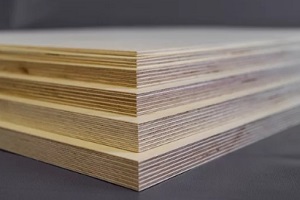When planning the construction of a structure, whether residential or commercial, the building materials chosen are just as important as their design and utility. Based on an owner’s budget, they may opt for the cheapest materials for the job or wish to invest in higher-quality options that contribute protective or aesthetic elements to the finished structure.
One of the most beneficial upgrades is fire-rated plywood; in fact, some municipalities require this material for certain construction elements to ensure a building stands up to flames in an emergency. However, choosing plywood that can withstand a fire requires industry knowledge to read labels and interpret fire rating information.
Here is an overview of the difference between FRT and fire rating, as well as how to read the relevant labels so that you can make an informed decision about the plywood you purchase for your next construction project.
What Does FRT Mean?
The term FRT stands for “fire retardant treated,” a chemical application that infuses wood with flame inhibitors. A piece of lumber is commonly placed into a chamber called a retort. Inside, a vacuum is created to push all the moisture out of the wood and inject fire-retardant chemicals into the empty spaces in the wood fibers.
A piece of FRT plywood has been treated this way to reduce its flame spread and slow down how fast a fire can travel. However, whether or not lumber has been fire retardant treated does not necessarily impact its fire rating.
How Is Fire Rating Different?
Fire rating refers to how long an object or structure can withstand a fire while still performing its intended function. If a doorway frame has a UL-listed fire rating of one hour, users should expect that the doorway will remain intact and not collapse for at least one hour after a fire starts.
While FRT can reduce how fast a fire spreads, it does not necessarily impact how long a piece of lumber can continue functioning as intended. To understand the fire rating of any wood under consideration, be sure to read its stamp.
All fire retardant lumber will have information mandated by the International Building Code that outlines important details necessary for deciding on the type of wood to buy. This stamp can be found on each piece of lumber, not just on its lot label.
How to Read a Fire Rating Stamp
Depending on whether the wood is approved for interior or exterior use, a fire rating stamp will have either seven or eight pieces of information. The first element should be the company responsible for handling the wood; this could be their brand name or logo.
Next is an identifier of the manufacturer who treated it, followed by the type of tree from which the wood was harvested. After this is a short description of how the wood was dried after it was treated. Typically, this concludes the information that is presented on the left side of the stamp.
On the right, the name or logo of the agency that inspected the wood should take the topmost space. Next will be perhaps the most essential detail for builders: the flame spread or smoke developed index value.
A flame spread index can range from 0 to 100, indicating how far a flame will travel on that material in a set amount of time. A flame spread index between 0 and 25 is class A, 26 to 75 is class B, and 76 to 100 is class C.
 Remember that a measurement of flame spread is not the same as a material’s resistance to degradation of function, and the flame spread number should not be solely considered when building a structure that is resistant to fire.
Remember that a measurement of flame spread is not the same as a material’s resistance to degradation of function, and the flame spread number should not be solely considered when building a structure that is resistant to fire.
Finally, the remaining area on the stamp is dedicated to relevant ESR numbers or process standards and a declaration of how the product performs in wet conditions if the material is meant to be used outside.
Learn More About Fire Retardant Treated Wood from the Pros
Wood contains multiple descriptors of its ability to withstand fire—and it is essential for builders to fully understand all of these elements to make safe and informed decisions for their residential and commercial customers.
The experts at Curtis Lumber & Plywood strive to provide comprehensive education on fire rating, fire retardant lumber, and more. Explore Curtis Lumber & Plywood’s extensive online resources to stay informed on the most important information about lumber.

